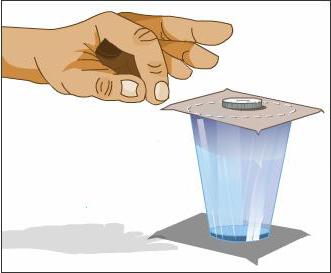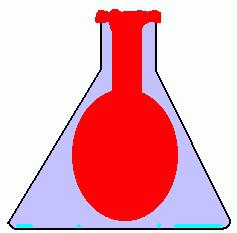Most people, recalling their school years, are sure that physics is a very boring subject. The course includes many tasks and formulas that will not be useful to anyone in subsequent life. On the one hand, these statements are true, but, like any subject, physics has another side to the coin. Only not everyone discovers it.
A lot depends on the teacher

Perhaps our education system is to blame for this, or maybe the whole thing is in the teacher, who thinks only that he needs to report the material approved from above, and does not seek to interest his students. Most often it is he who is to blame. However, if the children are lucky, and the lesson will be taught by a teacher who loves his subject, he will not only be able to interest students, but also help them discover something new. As a result, children will start to attend such classes with pleasure. Of course, formulas are an integral part of this academic subject, there is no escape from this. But there are also positive points. Of particular interest to students are experiments. We will talk about this in more detail. We will consider some interesting experiments in physics that you can conduct with your child. This should be interesting not only to him, but also to you. It is likely that with the help of such classes you will inculcate in your child a genuine interest in learning, and “boring” physics will become his favorite subject. It is not difficult to conduct experiments at home , it will require very few attributes, the main thing is to have a desire. And perhaps then you can replace your child with a school teacher.
Consider some interesting experiments in physics for the little ones, because you need to start small.
Paper fish
To conduct this experiment, we need to cut a small fish out of thick paper (cardboard, for example), the length of which should be 30-50 mm. We make a round hole in the middle with a diameter of about 10-15 mm. Next, cut a narrow channel (3-4 mm wide) from the tail side to a round hole. Then we pour water into the basin and carefully place our fish there so that one plane lies on the water, and the second remains dry. Now you need to drip oil in a round hole (you can use a grease fitting from a sewing machine or a bicycle). The oil, trying to spread over the surface of the water, will flow along the cut channel, and the fish will float forward under the action of the oil flowing back.
Elephant and Pug
We continue to conduct entertaining experiments in physics with your child. We suggest that you introduce your child to the concept of leverage and how it helps facilitate the work of a person. For example, tell us that using it you can easily lift a heavy cupboard or sofa. And for clarity, to show elementary experience in physics using a lever. To do this, we need a ruler, a pencil and a pair of small toys, but always of different weights (which is why we called this experience “Elephant and Pug”). We fasten our Elephant and Pug to different ends of the ruler with the help of plasticine, double-sided tape or ordinary thread (just tie the toys). Now, if you put the ruler with the middle part on the pencil, then, of course, the elephant will draw, because it is heavier. But if you move the pencil in the direction of the elephant, then Pug easily outweigh it. This is the principle of leverage. The ruler (lever) rests on a pencil - this place is the fulcrum. Further, the child should be told that this principle is used everywhere, it is laid in the foundation of the crane, swing and even scissors.
Home Experience in Inertia Physics

We will need a can of water and a household net. It will not be a secret to anyone that if you turn an open jar, then water will pour out of it. Let's try? Of course, for this it is better to go outside. We put the jar in the grid and begin to smoothly swing it, gradually increasing the amplitude, and as a result we make a full turn - one, two, three and so on. Water does not spill. Interesting? Now make the water spill up. To do this, take a can and make a hole in the bottom. We put it in a grid, fill it with water and begin to rotate. A jet is beating from the hole. When the can is in the lower position, this does not surprise anyone, but when it takes off, the fountain continues to beat in the same direction, and not a drop from the neck. There you go. All this can explain the principle of inertia. When the bank rotates, it tends to fly straight, but the grid does not let it in and makes it describe the circles. Water also tends to fly by inertia, and in the case when we made a hole in the bottom, nothing prevents it from breaking out and moving in a straight line.
Surprise box
Now we consider experiments in physics with a shift in the center of mass. You need to put a matchbox on the edge of the table and slowly move it. The moment he passes his middle mark, a fall will occur. That is, the mass of the part extended beyond the edge of the countertop will exceed the weight of the remaining part, and the box will tip over. Now we’ll shift the center of mass, for example, put a metal nut inside (as close to the edge as possible). It remains to place the boxes in such a way that a small part of it remains on the table, and a large one hangs in the air. Fall will not happen. The essence of this experiment is that the entire mass is above the fulcrum. This principle is also used everywhere. It is thanks to him that furniture, monuments, vehicles, cranes and much more are in a stable position. By the way, the children's toy Vanka-Vstanka is also built on the principle of displacement of the center of mass.
So, we continue to consider interesting experiments in physics, but move on to the next stage - for sixth grade students.
Water carousel
We need an empty tin can, a hammer, a nail, a rope. We pierce a hole with a nail and a hammer in the side wall at the very bottom. Further, without pulling the nail out of the hole, we bend it to the side. It is necessary that the hole is oblique. We repeat the procedure from the second side of the can - you need to make the holes opposite each other, but the nails are bent in different directions. We punch two more holes in the upper part of the vessel, we thread the ends of the rope or thick thread through them. We hang the container and fill it with water. Two oblique fountains will begin to beat from the lower holes, and the bank will begin to rotate in the opposite direction. I work on this principle with space rockets - the flame from the engine nozzles strikes in one direction, and the rocket flies in the other.
Physics Experiments - Grade 7
We will conduct an experiment with mass density and find out how to make an egg float. Physics experiments with different densities are best performed using fresh and salt water as an example. Take a jar filled with hot water. Let’s drop an egg into it and it will immediately drown. Next, pour salt into the water and stir. The egg begins to float, and the more salt, the higher it rises. This is because salt water has a higher density than fresh water. So, everyone knows that in the Dead Sea (its water is the most saline) it is almost impossible to drown. As you can see, experiments in physics can significantly increase the horizons of your child.
Balloon and plastic bottle
Pupils of the seventh grades begin to study atmospheric pressure and its effect on objects surrounding us. To expand this topic deeper, it is better to conduct relevant experiments in physics. Atmospheric pressure affects us, although it remains invisible. We give an example with a balloon. Each of us can cheat him. Then we put it in a plastic bottle, put the edges on the neck and fix it. Thus, air can only enter the ball, and the bottle will become a sealed vessel. Now try to inflate the ball. We will not succeed, because the atmospheric pressure in the bottle will not allow us to do this. When we blow, the ball begins to displace air in the vessel. And since the bottle is tight, we have nowhere to go, and it begins to shrink, thereby becoming much denser than the air in the ball. Accordingly, the system is leveled, and it is impossible to inflate a ball. Now make a hole in the bottom and try to inflate the ball. In this case, there is no resistance, the displaced air leaves the bottle - atmospheric pressure is equalized.

Conclusion
As you can see, experiments in physics are not at all complicated and quite interesting. Try to interest your child - and the study for him will take place in a completely different way, he will begin to attend classes with pleasure, which in the end will affect his performance.